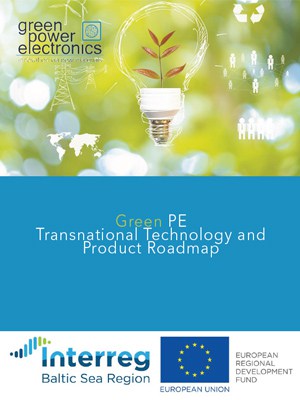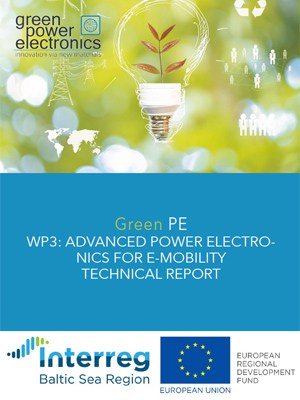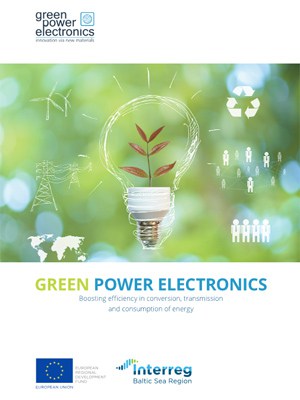Green PE
Advanced power electronics can save energy
The novel technologies behind advanced power electronics allow for more than 50% of energy savings. They help to reduce energy losses at all stages of the energy supply chain. The market for advanced power electronics is expected to grow and is driven by the demand for more energy efficiency and for more renewable energy production as part of the European Union’s transition towards a green, low carbon society.
An untapped potential
More than 15.000 companies in the Baltic Sea region deal with power electronics. However, the market uptake of advanced power electronics is challenged by technical and economic barriers, e.g. related to the purchase of adequate equipment in companies and proper timing of investment. As a result, companies tend to choose conservative technology management and R&I strategies with regard to advanced power electronics. If provided with better information and consultancy about advanced power electronics, companies could benefit from faster innovation.
What are advanced power electronics?
Power electronics master the flow of energy in electronical devices from car engines to turbines and battery systems. Power electronics that is based on next generation materials beyond Silicon , such as wide bandgap semiconductors, is called 'advanced power electronics'. The novel technologies behind advanced power electronics allow to increase the power output of devices while making them ever smaller. Advanced power electronics also prepares devices for smart digitalisation and is an essential part of efficient production, distribution and consumption of electricity in a renewable energy society.
Budgets
in numbers
-
3.10MillionTotal
-
2.42MillionErdf
-
0.00MillionEni + Russia
-
0.00MillionNorway
Achievements
A roadmap and pilots on smart housing, wind power generation and e-mobility
The project consortium elaborated a transnational technology and product roadmap for advanced power electronics to help the industry, R&D institutions and policy makers understand the chances of and the barriers related to the novel technologies. To prove the practical relevance of the roadmaps´ findings, five electronic pilot applications were developed and tested, covering the areas of smart housing, electricity generation from wind power and e-mobility.
Active exchange with companies
To make sure that the projects´ activities have an impact on the ground, the partnership directly addressed businesses. The project conducted 80 company visits and more than a dozen in depth consultations which helped the companies to rethink their approaches in product development and to consider advanced power electronics to tackle their challenges. Some companies included advanced power electronics in their R&D strategies and investments. All in all, some 240 companies were actively engaged in the project activities, and partners in technology transfer reached out to around 7.000 companies.
Research and innovation alliances across borders
On the transnational level, the partnership set up a collaboration platform for research institutions and innovative start-ups and SMEs around the Baltic Sea. It is meant to transfer knowledge and to build up more research and innovation alliances across borders such as the recently established Centre for Industrial Electronics, which was set up at the Danish-German border as a joint endeavour of industry, academia, regions and municipalities.
Outputs
Transnational technology and product roadmap on advanced power electronics

Advanced power electronics pilot in e-mobility: inverter for racing cars

Brochure: Green power electronics

Project Stories
-
08.08.2019
How Interreg makes electronics green
Next-generation large windmills, solar power plants and electric cars can become more reliable and efficient thanks to advanced power electronics. These new technologies are in fact among the key drivers for reducing energy consumption and CO2 emissions. The Interreg Baltic Sea Region project Green PE explored the new terrain for using green advanced power electronics together with academia, technology transfer organisations and industry around the Baltic Sea.Read full story
Partners
University of Southern Denmark
- TownSonderborg
- RegionSydjylland
- CountryDenmark
- RepresentativeHorst-Günter Rubahn
- Phone
- E-Mail
- Web
Renewable Energy Hamburg
- TownHamburg
- RegionHamburg
- CountryGermany
- RepresentativeJan Michael Luca Plewa
- Phone
- E-Mail
- Web
Christian Albrechts Universitaet Kiel
- TownKiel
- RegionKiel, Kreisfreie Stadt
- CountryGermany
- RepresentativeAnja Uhlenbrok
- Phone
- E-Mail
- Web
RISE Research Institutes of Sweden AB
- TownBoras
- RegionStockholms län
- CountrySweden
- RepresentativeCharlotte Karlsson
- Phone
- E-Mail
- Web
University of Latvia
- TownRiga
- RegionRīga
- CountryLatvia
- RepresentativeDonats Erts
- Phone
- E-Mail
- Web
Latvian Technological Center
- TownRiga
- RegionRīga
- CountryLatvia
- RepresentativeJanis Stabulnieks
- Phone
- E-Mail
- Web
University of Tartu
- TownTartu
- RegionLõuna-Eesti
- CountryEstonia
- RepresentativeToomas Plank
- Phone
- E-Mail
- Web
Kaunas University of Technology
- TownKaunas
- RegionKauno apskritis
- CountryLithuania
- RepresentativeRasa Žostautienė
- Phone
- E-Mail
- Web
Applied Research Institute for Prospective Technologies
- TownVilnius
- RegionVilniaus apskritis
- CountryLithuania
- RepresentativeLina Kygiene
- Phone
- E-Mail
- Web
Warsaw University of Technology
- TownWarsaw
- RegionMiasto Warszawa
- CountryPoland
- RepresentativeMariusz Sochacki
- Phone
- E-Mail
- Web
NATEK Power Systems AB
- TownÄlmhult
- RegionKronobergs län
- CountrySweden
- RepresentativeMikael Renegård
- Phone
- E-Mail
- Web
Kaunas Science and Technology Park
- TownKaunas
- RegionKauno apskritis
- CountryLithuania
- RepresentativeRaimondas Gaidys
- Phone
- E-Mail
- Web
CLEAN
- TownSønderborg
- RegionSydjylland
- CountryDenmark
- RepresentativeHenrik Bjerregaard
- Phone
- E-Mail
- Web
Polish Chamber of Commerce for Electronics and Telecommunications
- TownWarszawa
- RegionMiasto Warszawa
- CountryPoland
- RepresentativeJaroslaw Tworog
- Phone
- E-Mail
- Web
Sustainable Smart Houses in Småland
- TownVäxjö
- RegionKronobergs län
- CountrySweden
- RepresentativeHans Persbeck
- Phone
- E-Mail
- Web
Ubik Solutions OÜ
- TownTallinn
- RegionPõhja-Eesti
- CountryEstonia
- RepresentativeAndre Lindvest
- Phone
- E-Mail
- Web
CONVERDAN A/S
- TownRødding
- RegionSydjylland
- CountryDenmark
- RepresentativeThomas Slivsgaard
- Phone
- E-Mail
- Web
-
Project managerHorst-Günter RubahnUniversity of Southern Denmark
-
Legal representativeJørgen SchouSyddansk Universitet
-
Financial managerJens V. KierkegaardSyddansk Universitet
-
Communication managerGesine StückDSN



